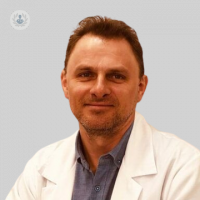Exploring cryosurgery for mole removal: What you need to know
Written in association with:Concerns about mole removal are common among patients. Many individuals seek options that are effective yet minimally invasive. Cryosurgery is one such method that has gained popularity for its simplicity and efficacy in treating certain types of moles. In his latest online article, Dr Andrzej Rozanski explore what cryosurgery entails, its benefits, and what patients can expect during and after the procedure.

What is cryosurgery?
Cryosurgery, also known as cryotherapy, is a medical technique that uses extreme cold to destroy abnormal tissues, such as moles. In this procedure, liquid nitrogen is applied directly to the mole, causing the tissue to freeze and eventually slough off. Liquid nitrogen is extremely cold (around -196°C), and its application creates a controlled frostbite effect on the mole, leading to its removal.
Benefits of cryosurgery for mole removal
One of the primary advantages of cryosurgery is its simplicity and minimal discomfort during the procedure. It is typically performed as an outpatient procedure in a doctor’s office or clinic. Since it does not involve cutting or stitches, there is generally little to no scarring after the mole falls off. Cryosurgery is also relatively quick, with the entire procedure usually taking only a few minutes per mole. This makes it a convenient option for patients with busy schedules who prefer a swift treatment process.
What to expect during cryosurgery
Before the procedure begins, your doctor will clean the area around the mole and may apply a local anaesthetic to minimise any discomfort. The liquid nitrogen is then applied to the mole using a special device such as a cryoprobe or cotton swab. You may feel a cold sensation or mild discomfort during this process, but it is usually well tolerated. After the treatment, the area may become red, swollen, and blistered. This is a normal part of the healing process as the body responds to the freezing effect of the liquid nitrogen. Over the following days, a scab will form over the treated area, which will eventually fall off, leaving smoother skin underneath.
Post-treatment care
It is important to follow your doctor’s post-care instructions carefully to promote proper healing. This may include keeping the area clean and dry, avoiding picking at the scab, and applying any recommended ointments or dressings. You should also protect the treated area from sun exposure and use sunscreen to prevent hyperpigmentation and ensure the best cosmetic outcome.
Is cryosurgery right for you?
Cryosurgery is suitable for many types of non-cancerous moles and skin growths. However, it may not be appropriate for all cases, especially for moles that are suspicious for skin cancer. Your doctor will evaluate your mole(s) and discuss the most suitable treatment options based on your individual circumstances.
You can schedule an appointment with Dr Rozanski on his Top Doctors profile.


